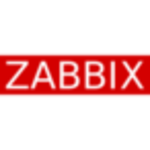We must separate the 2 parts of this product :
Monitoring Core (Nagios Core) -
Possibilities to manage Nagios Core and Nagios Client configurations by Service Manager like Ansible, Puppet etc. For big environment's, it's the simplest way for industrialisation
Interface (Nagios XI) -
- Correct and scalable Dashboards for management
- Easy way to view you entire production ( more complete than Nagios Core interface)
My customer choose this product because he previously worked with Nagios Core 3 and didn't know other tools. His principal argument for him is that the Dashboards correctly present their work.
The important separation between Interface and Core to maintain historical plugins and methods generate complexity that makes Nagios unusable for repeat work. You must choose a way to manage your configuration, by interface or by files in Core, and never change your rules. If you choose files, you lose the dashboard advantage instead of importing them manually, and, for the moment, there are no APIs for managing hosts/services are present. If you choose Interface, you must configure hosts/services manually, and again there are no APIs for managing hosts/services are present.
Nagios Core has a big advantage in that has been lost in Nagios XI. Another way you could manage is by having three different databases
- Postgres for Nagios XI's hosts/services définitions
- MySQL with ndo2db for metrology
- Rrd for the Nagios Core
This is not easy to maintain and High Availability becomes complex. The simplest way is by VMware HA modifications preconfigured by Nagios.
I've been using it for the last six months.
It's very easy to install it and manage it with Nagios XI's interface.
There have been no issues with the stability.
I only have 50 hosts and haven't needed to scale beyond that.
Nagios responds quickly when you need them, and the community is really big.
I previously used HP SiteScope, Nagios Core 3, Xymon and Zabbix. I didn't choose Nagios, my customer choose it and I implemented it. My prefered tools is Zabbix for the moment.
It's very easy for the basics features, but, like others tools, when you need plugins, it becomes more complex.
No ROI was requested by my customer, only visibility by their management and using their knowledge on Core 3.
Your architecture must be conceived prior to implementation as each error must become complex to change.














